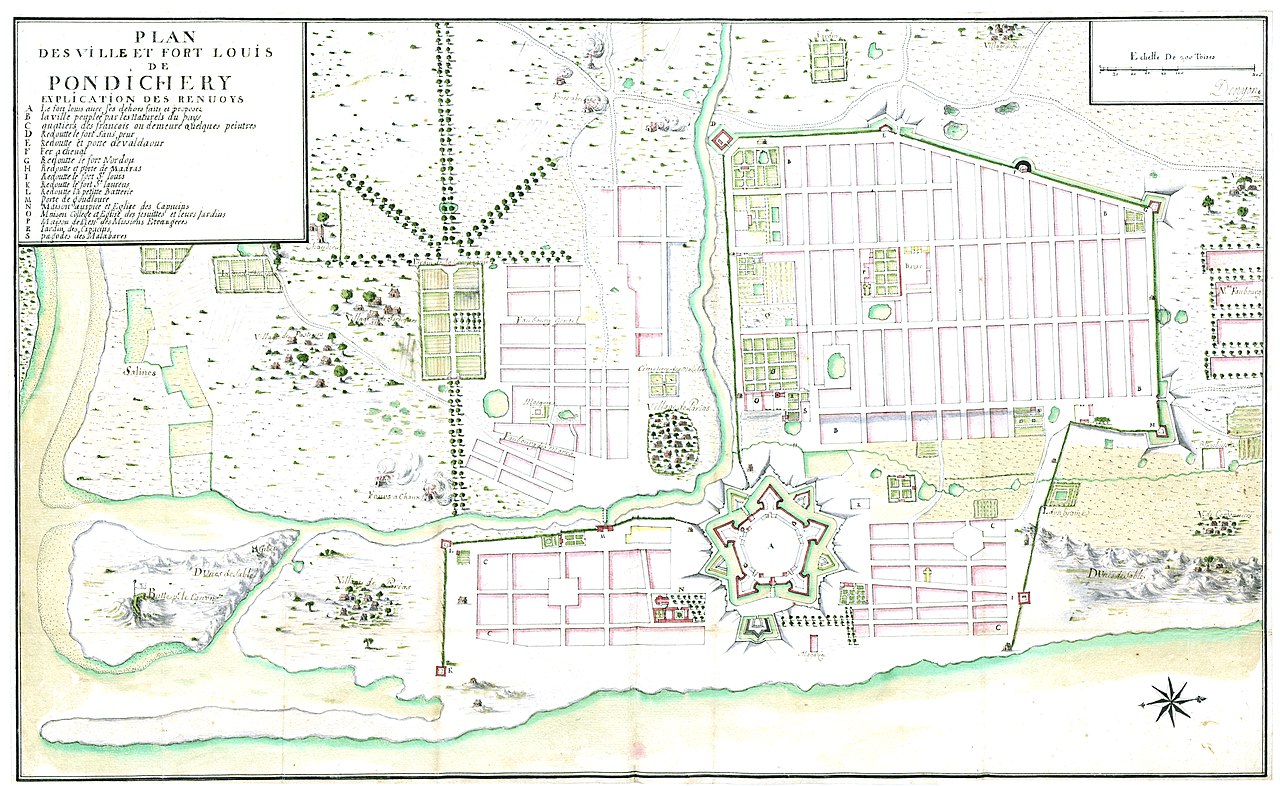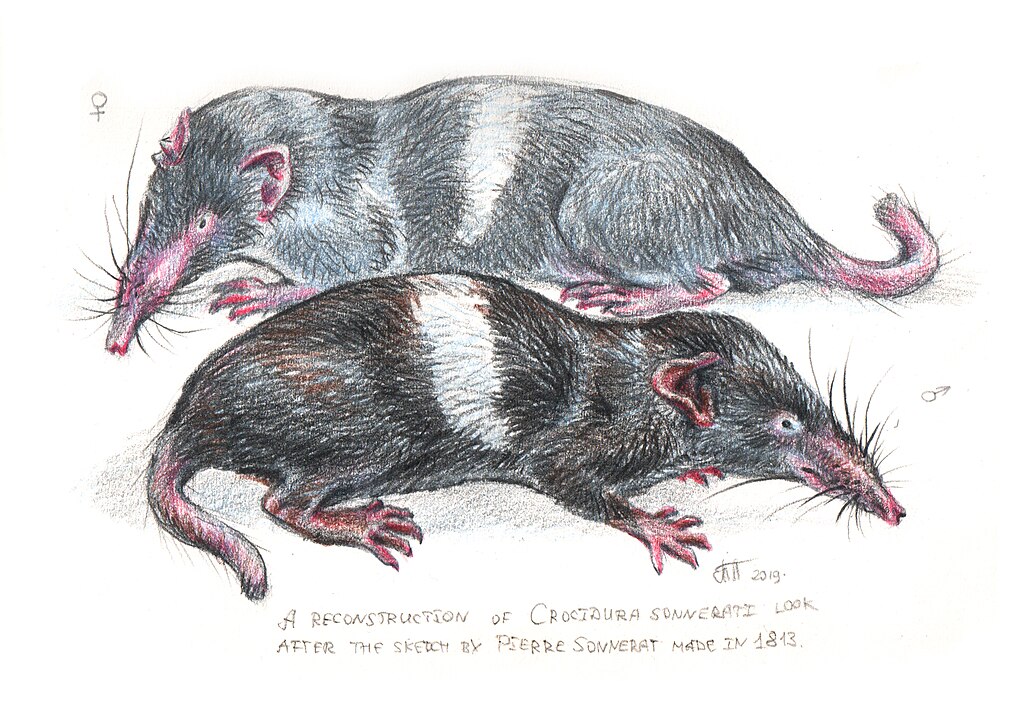I recently visited Puducherry (or Pondicherry), an area I had never been to. I chose to go in summer, an unpopular time for tourism, given the heat. A reason was to speculate and imagine what the place might have looked like in the past in the light of some enigmatic species known from the region.
 |
Apteroessa grossa (Fabricius, 1781)
Lost to ignorance and
probably driven to extinction
by non-violent means |
|
And the reason for that is an enigmatic little beetle that has not been seen for more than 200 years. Given that there is a major ecology school, numerous naturalists, and the French Institute, one would imagine that whatever I had to learn was well-known. On a visit to the Natural History Museum in London in 2014, I had
happened to meet a brilliant curator of beetles and in the course of
casual conversation he mentioned how he had been interviewed for his
job. He had been asked what he would do if there was a fire in the museum and
he had declared that he would grab one of the oldest beetle specimens
in the collection, a species of which only three specimens exist in the
entire world, a species that has never been seen again where it had
been collected - somewhere on the Coromandel Coast. This large (more than an inch long)
flightless tiger beetle,
Apteroessa grossa,
had been collected by the Danish colonialists, from the region of
Tranquebar (Tharangambadi) and had been described and given a binomial
name by
Johan Christian Fabricius
in 1781. Nobody quite knows exactly where the specimens came from, that
is, there is no information on the habitat.
Here is what Fabio Cassola (died 2016)
wrote on this beetle:
"... the enigmatic nocturnal Apteroessa grossa, described long ago by Fabricius (1781) from the Coromandel coast (Tranquebar), present-day Tamil Nadu state. A second locality (Mayanayakanur, Ammayanayakanur Madura) is also known in the entomological literature (Wiesner 1992). The species was isolated, in modern taxonomy, because of its aberrant characters, in a special subtribe of its own (Apteroessina) (Rivalier 1971). My late friend and colleague Karl Werner, who visited India and the type locality several times, tried repeatedly, but unsuccessfully, to collect it. He related (pers. comm.) that the environment is probably much changed, that the area is presently overcrowded and that he feared that the species could well have disappeared in the wild. "
Having very little
knowledge of the Coromandel region, my interest was in understanding what kinds of habitats might have existed in Pondicherry and the Coromandel region that could have been greatly altered.
 |
| A 1919 map overlaid on Google Earth to examine change. The original map can be found on Wikimedia Commons, click here for an interactive overlay or a downloadable kml file. |
It is clear that development and the pressure on land has gone up enormously. Many of the alterations of the land are thanks to engineered solutions. One of the first victims, it would seem are small water bodies. These are filled in and pipes drawn from long distances from larger waterbodies, which are often deepened and the streams and canals are straightened out and made to flow in concrete channels. I found that Rue Petit Canal in Pondicherry was once an actual unlined stream course.
 |
The old canal in 1716. Also note the sand spits. Image can be found here and the overlay can be explored here.
This shows Fort St. Louis which was destroyed by the English in 1761. |
 |
| The canal as modified by engineers. 2019 |
I never quite managed to explore the actual Tranquebar region but it would seem that this was an extensive delta zone with a lot of sand deposits. Perhaps
Apteroessa lived on sandy dunes, as some flightless African
Dromica species live. Sandy beaches have been destroyed along the coast by engineers or contractors with what can only be called "commonplace thinking" - which could be defined as knowledge claims that could be easily (and incorrectly) explained to the masses and the people in power - trying to explain sea dynamics and geology is perhaps considered too hard - for some contrast
see how this is taught in California. The typical engineering solution is to produce hard boundaries with rocks or concrete and these are well known to cause sand deposition to shift.
 |
Coromandel region with Tranquebar c. 1758 (the vegetation marked is not characterized)
Image can be found here / here and the overlay can be found here |
The Coromandel zone is remarkable perhaps for the number of species that have gone quietly extinct or out of common knowledge. There is a near endangered
Pondicherry shark (
Carcharhinus hemiodon), an enigmatic species of shrew that has
never actually been seen -
Sonnerat's shrew - and there is a thorny Acacia-like plant,
Vachellia bolei, from further south that was described in 1985, that has been declared extinct recently. And these are just a few species that we know about.
Coming back to our tiger beetle, there is a suggestion that flightlessness is associated with stable habitats, where there is no need for dispersing out of. What could these be, mangroves, coastal sands? I did not manage to examine the Pichavaram mangroves, perhaps these need to be carefully watched. One wonders if perhaps the beetles lived further inland of Tranquebar amid the galleries of the boulder strewn hills in that area. A second locality has been suggested from near Sirumalai which is not entirely certain but that area has some patches under protection, so who knows, they may still exist somewhere! Perhaps interested people living in this zone should keep an eye.
Further reading






Unbelievable, we've lost count of what all we've lost and it doesn't even matter! With more and more preference given to 'new discoveries' we sure as hell are not worried about what happens to a certain species post-discovery - what a classic example(s) you have shared, Shyamal! As always, a captivating read. I wish I could join you in the hunt for the flight-less ground beetle!
ReplyDeleteGosh, I thought I had responded to this Aniruddha but it seems it did not appear! Interesting comment, I had not seen it that way. Have you seen this https://onlinelibrary.wiley.com/doi/full/10.1111/conl.12386 ?
DeleteDon't take me wrong. I am only validating hunt for species we assume are extinct. Emphasis is more on new discoveries now than ever - and your example of this amazing beetle brilliantly highlights the issue at hand - where do we have access to grants to find what we've lost, on the other hand, we have people bidding on discovering a new species in-their-name. Thank you for sharing this paper! This ground beetle, I hope, resurrects as a Lazarus species. :)
ReplyDelete